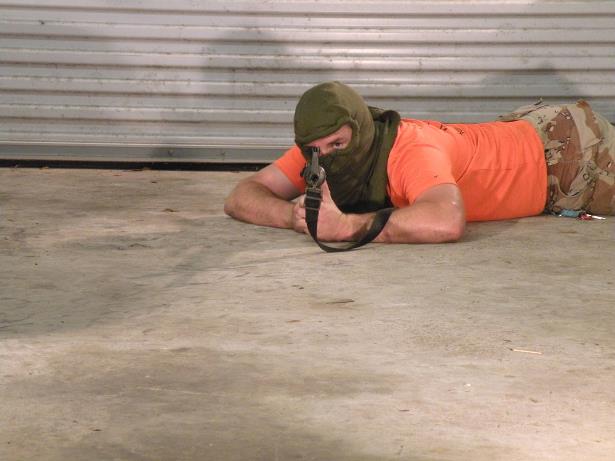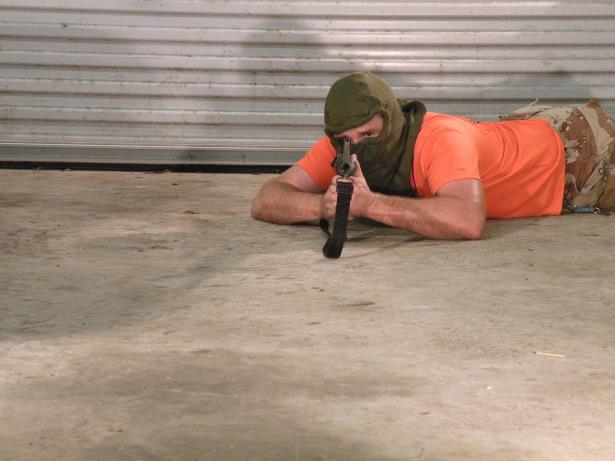Brass Fetcher Ballistic Testing
The 30 Carbine is your best friend if you need a military-type rifle with little to no recoil and suitable terminal effects. It is slightly ‘less gun’ than a 223 Remington rifle but a hit on the numbers within 200 yards will suitably discourage or stop an attack by hostile person(S). With a maximum kinetic energy in the neighborhood of 1000 ft-lbf, I don’t recommend it for hunting but will silently endorse it as an ‘ok’ hunting tool if this is the most powerful gun that you have available to you. Most commonly found chambered in the US M-1 Carbine, the 30 Carbine cartridge is a great match for such a lightweight and well-built firearm. Before we delve into the particulars of the 30 Carbine cartridge, let me speak briefly about the M-1 Carbine rifle itself.
Above is the US M-1 Carbine. If I had not received five days of training with the AR-15 (at Thunder Ranch), I would have an M-1 Garand derivative rifle (an M14 in all likelihood) as my only rifle. More practical than the M14 is the Mini-14 from Ruger because of its lighter weight, smaller/more available ammunition (223 Remington) and its lower recoil. In either second or third place is the M-1 Carbine. You need to be able to hit your target accurately and do it in as short a timeframe as possible. Lightweight guns can be swung onto target with greater speed to help accomplish this task. Anyone who has carried a a rifle further than the distance from their automobile to the firing line will know that even lightweight rifles become heavy after a while and all guns are awkward to carry. If anything discussed by the ‘SHTF’-inclined ever comes to pass, you will likely be doing lots of carrying of the rifle and little to no shooting of the rifle. Why torture yourself with extra weight?
An advantage that is not commonly discussed is the sight offset issue. The higher up on the gun your eye has to be to use the sights … the more exposed your head is to gunfire. This is true especially if you are shooting from prone, where your head becomes the dominant target. Fifteen round magazines for the M-1 Carbine, as originally issued with the gun, don’t protrude below the butt of the rifle. It seems as though the gun designers of yore understood that personnel protection from reducing the sight offset was more important than missing with an additional 15 cartridges in the magazine. Let’s look below at the effect on target exposure played by a magazine that doesn’t extend below the bottom of the rifle (20 round AR-15 magazine) and a magazine that does extend below the bottom of the rifle (30 round AR-15 magazine):
The picture (Figure 1) at left is the AR-15 with a 20 round magazine fitted and the picture (Figure 2) at right is with the 30 round magazine fitted. The as-issued M-1 Carbine keeps your head down lower by having a smaller front sight offset and a magazine (15 round magazine only) that does not protrude below the bottom of the rifle.
There is no practical reason to use FMJ bullets in the 30 Carbine for anything other than putting holes in paper. Self-defense and hunting roles are best served by expanding ammunition. I highly recommend the 30 Carbine as a firearm for non-frequent shooters and frequent shooters with a need for a lightweight, reliable rifle that trades some effectiveness for the probability that you will have the gun with you when you need it.
More Info
10-percent Ballistic Gelatin Shots
See how well this caliber stacks up against the FBI performance requirement of expansion and 12.0” or deeper penetration depth.
20-percent Ballistic Gelatin Shots
See how well this caliber stacks up in military-standard performance evaluations.
Heavy Clothing
Heavy Clothing is placed in front of the gelatin block to simulate an attacker wearing winter clothing.


